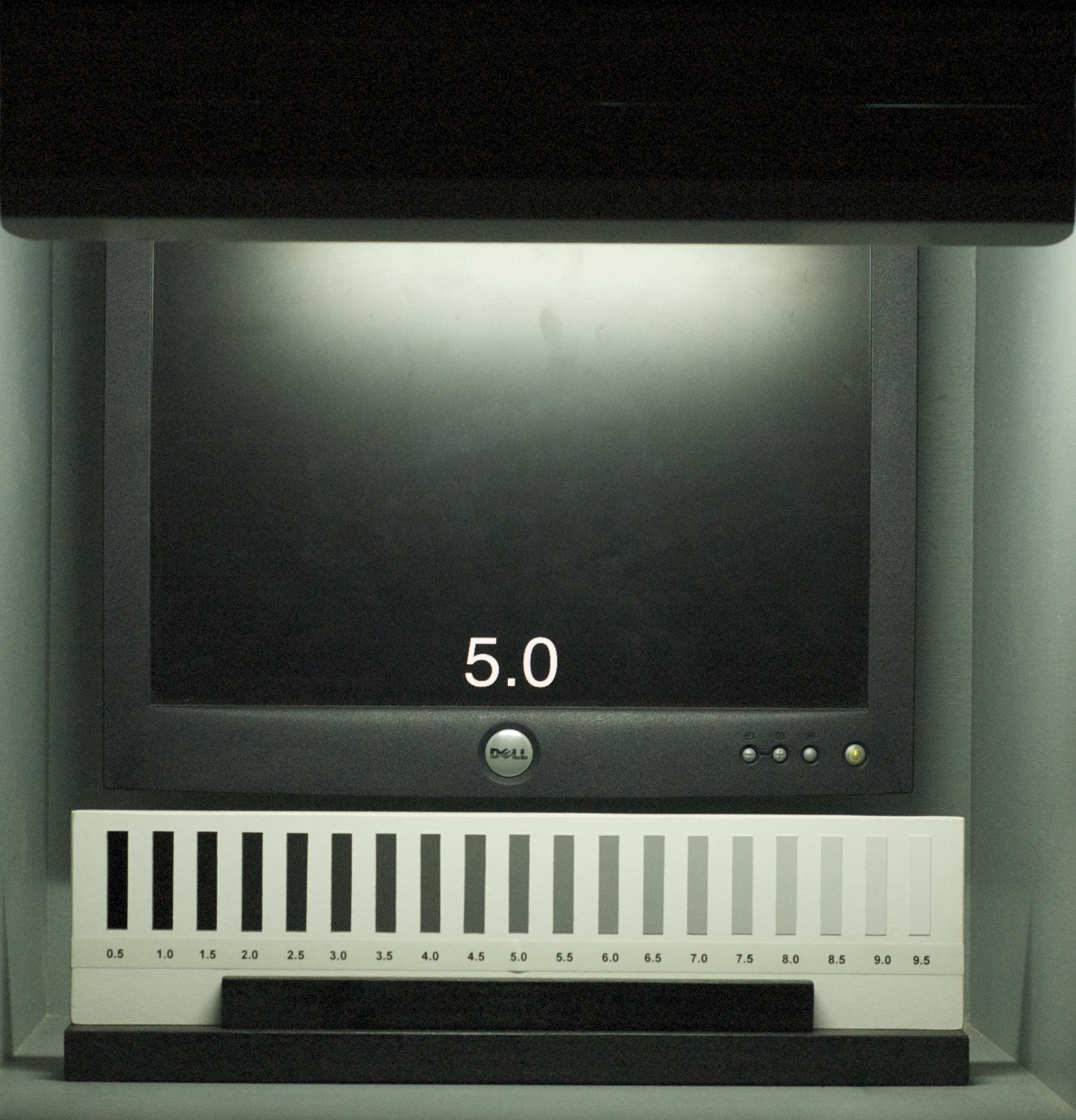Below are the instructions given to each observer at the beginning of the first session:
"In front of you is a black box with a small, circular window. You will place your head at this chin rest and look at the display with your right eye. To your left is an open box with piece of cardboard that has small squares of paper on it, ranging from black to white. Each corresponds to a number, indicated below. In today's experiment, the papers take values from 0.5 to 9.5" ("from 2.0 to 9.5" if the standard Munsell palette is used).
"In the experiment, you will look into the black box and see a checkerboard. The square in the center of the checkerboard will be your target. Your task is the following: if the checkerboard were composed of pieces of paper like those on the cardboard scale to your left, which piece of paper would be the closest match to the square at the center of the checkerboard? In some of the trials, this whole background will be one color. And sometimes, the center square will be the same shade as one of the adjacent squares or the homogeneous background, so it will blend in. Don't let that confuse you. Your task is always to pick a piece of paper from the scale that would be the closest match to the square at the center of the checkerboard."
"Once you have a number in mind, you can indicate your choice using the slider. Moving the slider to the right or the left will increase or decrease the number displayed on the computer monitor behind the cardboard strip. When the monitor shows the value you have in mind, press the red button on the slider to indicate your final choice. After you press the red button on each trial, the computer monitor on your left will display the message "Got response. " indicating that your response is recorded. When this message disappears from the screen, the next trial had begun and there is a new square for you to match."
"If you feel that the center square is darker than all of the papers, please respond with "Darker than 0.5" ("Darker than 2.0", if the standard palette is used). This option will be displayed by moving the slider all of the way to the left. If you feel that the center square is lighter than all of the papers but still looks like a surface, please respond with "Lighter than 9.5 but still a surface". This option will be displayed if you move the slider to the right of where it indicates 9.5. If you feel that the center square is lighter than any piece of paper and does not look like a surface but more like a source of light itself, respond with "Glowing" by moving the slider all the way to the right."
"You may take as long as you like to respond, and you may look back and forth between the checkerboard and the box with the cardboard papers. After all of the trials have been completed, the checkerboard will turn to black. At this point, you will have a brief break while the experimenter begins a new block of trials. Do you have any questions ?"
Following the questions, the lights are turned off and the experiment begins.
At the beginning of the following sessions (which in some experiments involved the use of a different palette), the experimenter only repeated the part of the instructions related to the palette:
"In today's experiment, the papers on the cardboard range from 0.5/2.0 to 9.5. If you feel that the center square is darker than all of the papers, please respond with "Darker than 0.5/2.0", by moving the slider all of the way to the left. If you feel that the center square is lighter than all of the papers but still looks like a surface, please respond with "Lighter than 9.5 but still a surface", by moving the slider to the right of where it indicates 9.5. If the center square is lighter than any of the papers and does not look like a surface, but more like a source of light itself, respond with "Glowing" by moving the slider all the way to the right."

Photograph of the matching booth with the palette